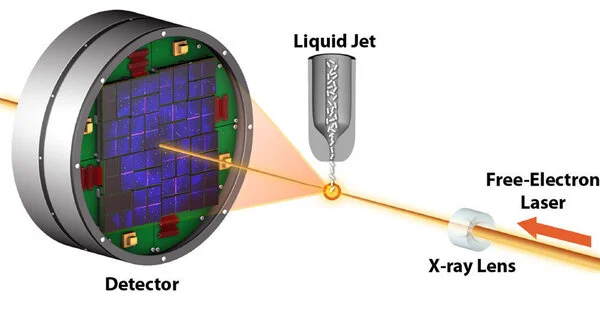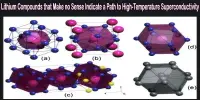A free-electron laser (FEL) is a fourth-generation light source that produces exceptionally bright and brief radiation pulses. It is a type of laser that uses free electron principles to produce coherent, high-intensity beams of electromagnetic radiation, often in the X-ray, ultraviolet, or infrared parts of the electromagnetic spectrum.
An FEL works and behaves in many ways like a laser, but instead of employing stimulated emission from atomic or molecular excitations as a gain medium, it uses relativistic electrons. Unlike typical lasers, which use optical resonators and photon-stimulated emission, FELs use the mobility of high-energy electrons via a periodic magnetic field.
Radiation is produced by a stream of electrons passing through a magnetic structure known as an undulator or wiggler. This radiation is amplified further in a FEL as it re-interacts with the electron bunch, causing the electrons to emit coherently, allowing for an exponential increase in overall radiation intensity.
Here’s how an FEL typically works:
- Electron Beam Generation: An electron gun or particle accelerator is used to create an electron beam. These electrons are accelerated to very high energy, often near the speed of light, and are commonly provided by linear accelerators (linacs) or synchrotron accelerators.
- Undulator: The undulator or wiggler is the FEL’s heart. This is a long sequence of alternating magnetic poles (usually permanent magnets or electromagnets) through which high-energy electrons flow. The alternating magnetic field causes electrons to flow in a wavelike pattern, resulting in the emission of synchrotron radiation. The radiation that is emitted is initially incoherent.
- Amplification: As the electrons traverse the undulator, the radiation they emit is amplified through the process of self-amplified spontaneous emission (SASE). The emitted photons interact with the moving electrons, causing them to become more coherent and synchronized. This results in the development of coherent, intense light pulses.
- Energy Extraction: The coherent radiation is then extracted from the undulator. This radiation can be tuned to a specific wavelength by adjusting the electron energy and magnetic field strength in the undulator.
- Beam Manipulation: The FEL system may include components like beam transport systems, beam diagnostics, and monochromators to manipulate, measure, and filter the resulting beam.
FELs have a number of advantages over conventional lasers. They can generate exceptionally high-intensity, short-pulse light beams throughout a wide spectral spectrum. Another significant feature is their tunability, which allows the wavelength of the FEL to be altered by changing the energy of the electron beam, making them ideal tools for a variety of applications in science, industry, and research. They’re employed in a variety of domains, including materials science, biology, and chemistry, as well as imaging the atomic and molecular structure of matter. FELs have also found use in free-electron laser facilities and synchrotron radiation sources.
FELs have greatly improved our ability to investigate and manipulate matter at the atomic and molecular levels, and they have become indispensable instruments in a wide range of scientific and industrial undertakings.
















